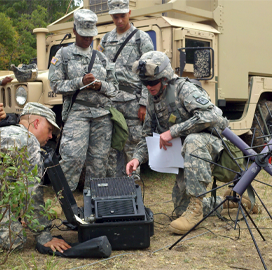The Department of Veterans Affairs (VA) is conducting a pilot of an artificial intelligence platform that could help predict a COVID-19 patient’s prognosis and address the individual’s treatment needs, Nextgov reported Friday.
“The problem is, given a positive detection of COVID viral test—if someone has a positive test—what is the prognosis? Will the patient need hospitalization? Are they at risk of death, etc.? What will be their needs?” Gil Alterovitz, director of AI at the VA said Thursday at the Genius Machines 2020 Virtual Summit. “The approach was to develop an applied AI model for that using both clinical and nonclinical information.”
A team at VA began working on the AI tool in early spring using collected data from over 11,000 patients. The team then examined how patients’ blood pressure, heart rate, pre-existing conditions and other health factors affect their mortality and recovery rates.
“It’s being used already operationally,” Alterovitz, head of the National Artificial Intelligence Institute (NAII) at VA, said of the new AI tool. “And we’re going to be now working with other medical sites to see how this can be used across the country in different settings, as well.”
ArchIntel recently held its Artificial Intelligence in Competitive Intelligence Forum on Thursday, Oct. 22nd featuring August Jackson, senior director of Market and Competitive Intelligence with Deltek, as the event moderator.
Visit ArchIntel Events to watch the full event for yourself to learn how notable leaders are working to maintain a competitive advantage through integrating emerging technologies into their organizations and offerings.







